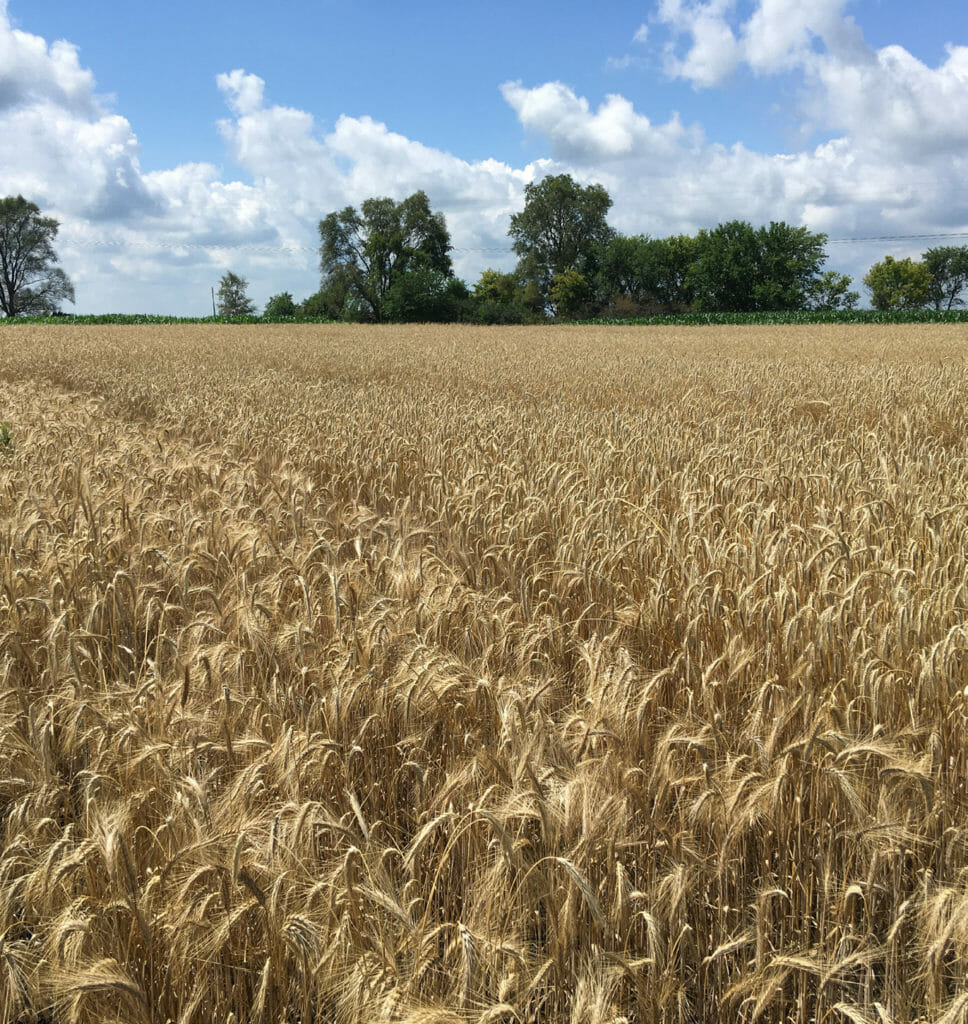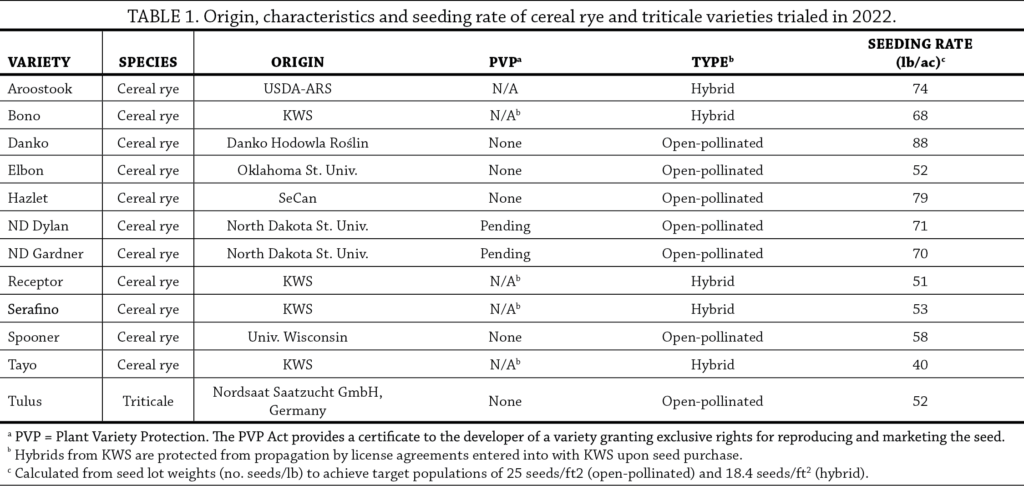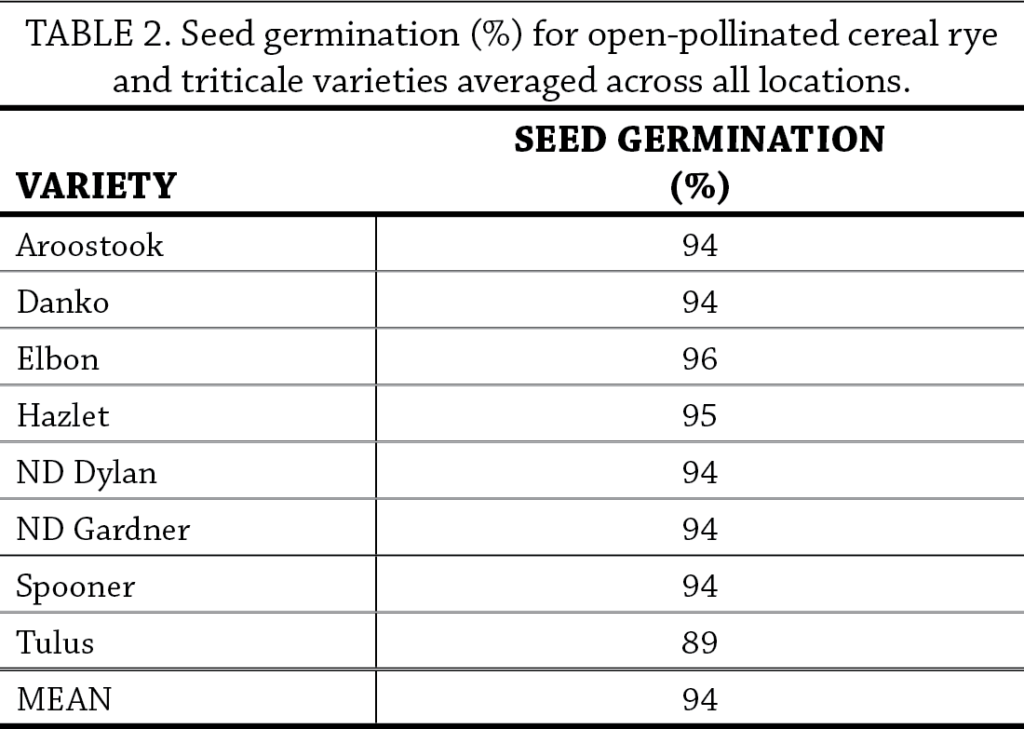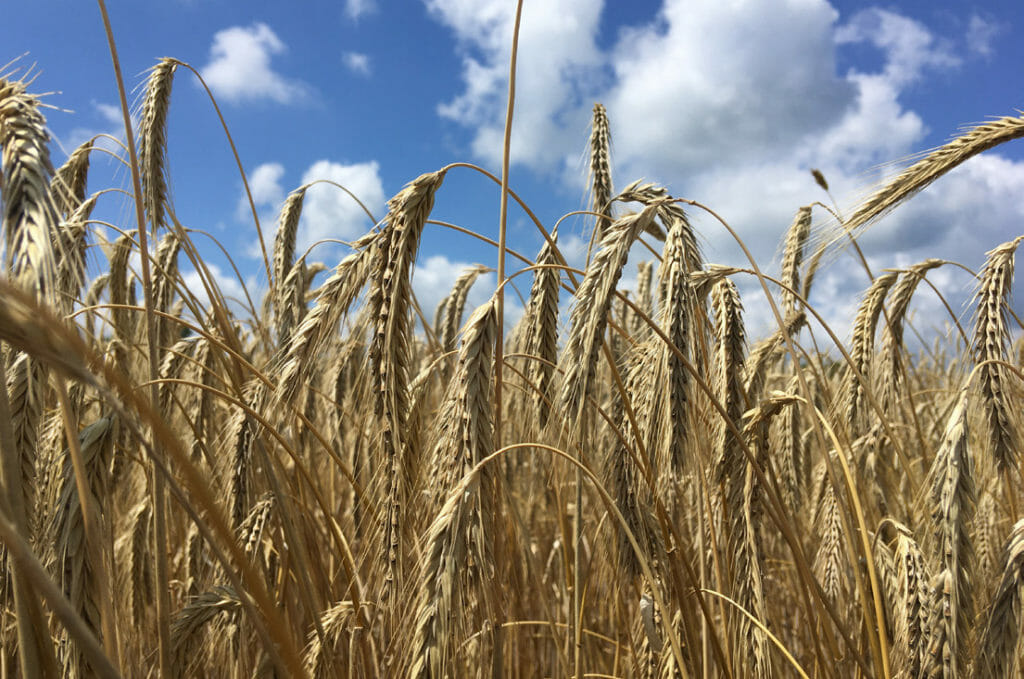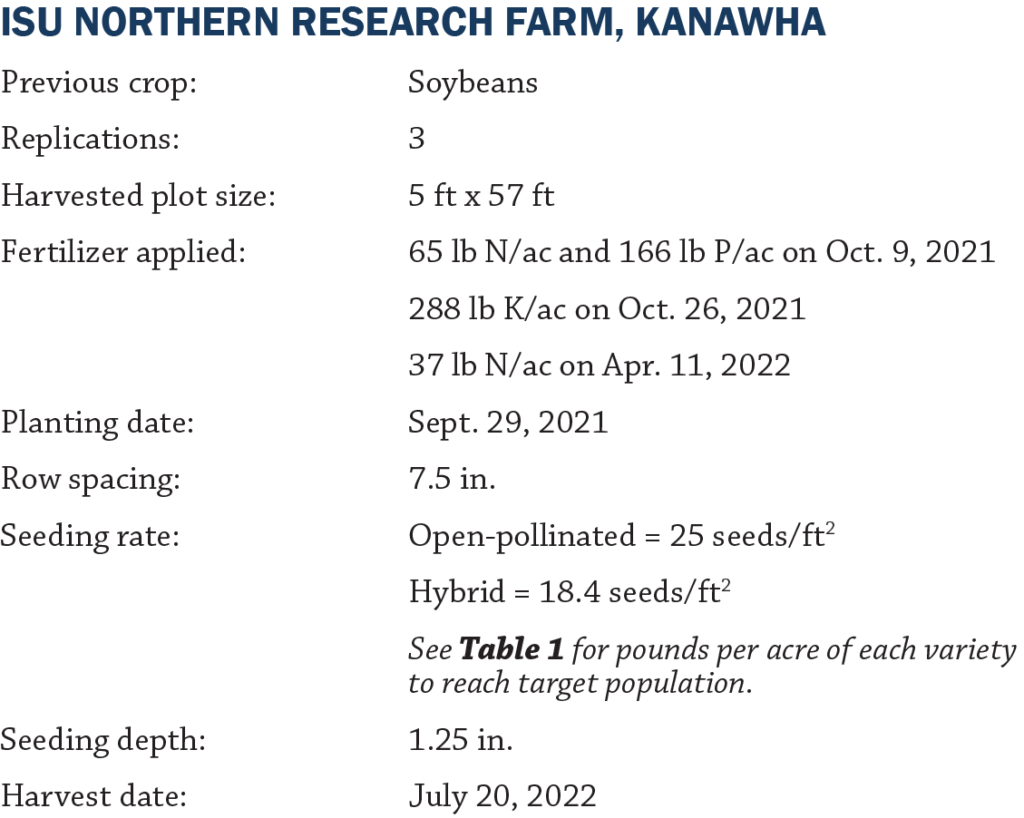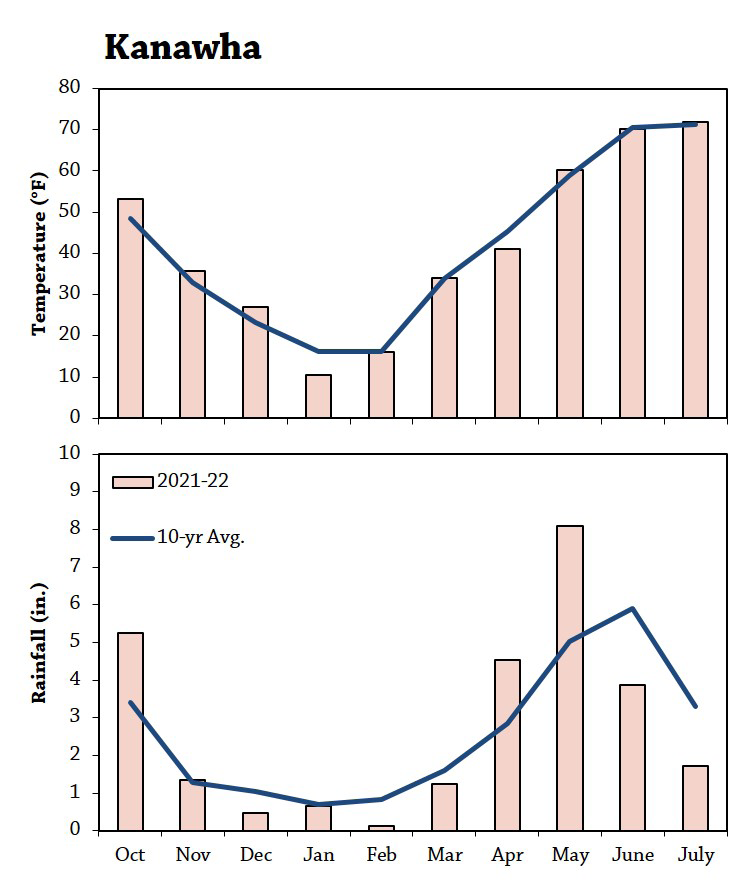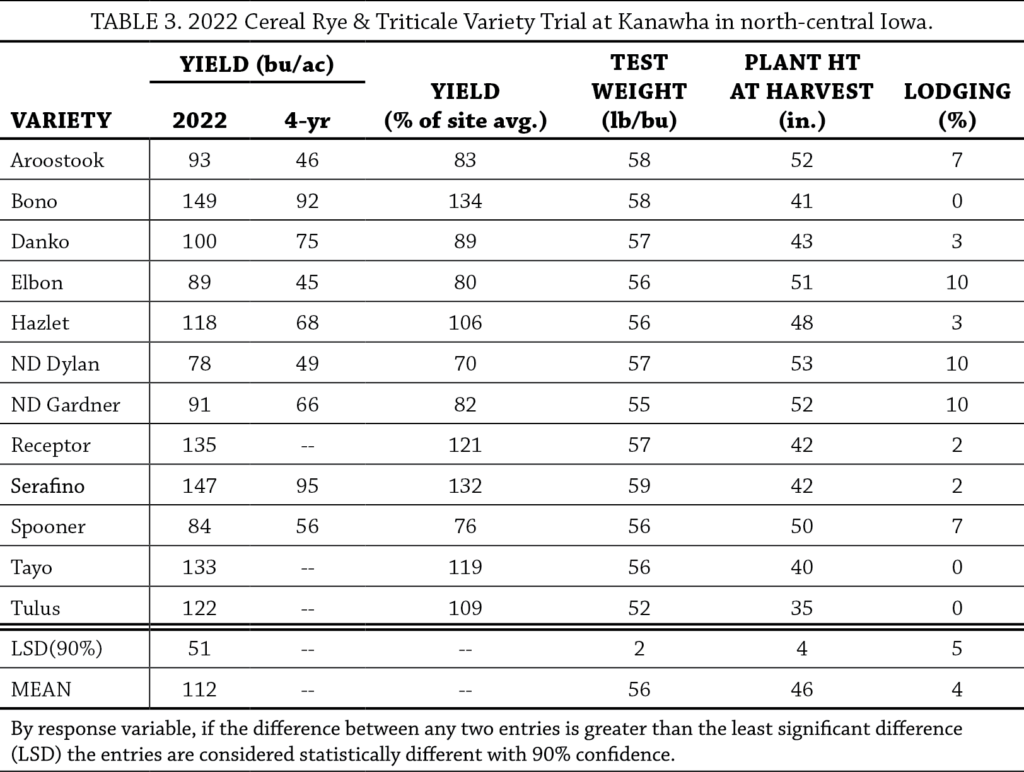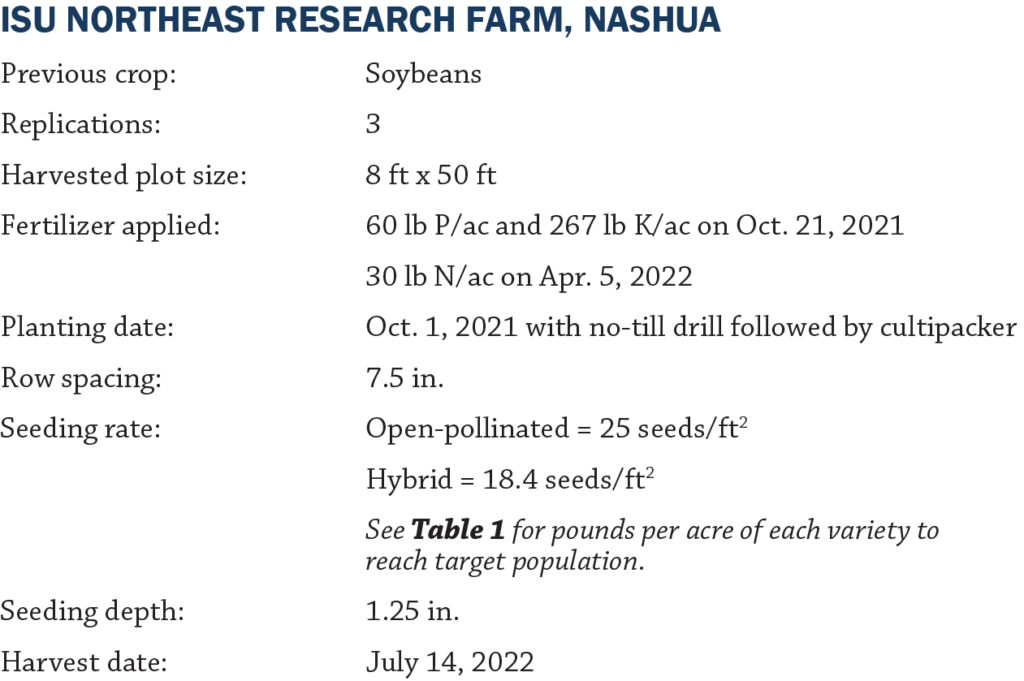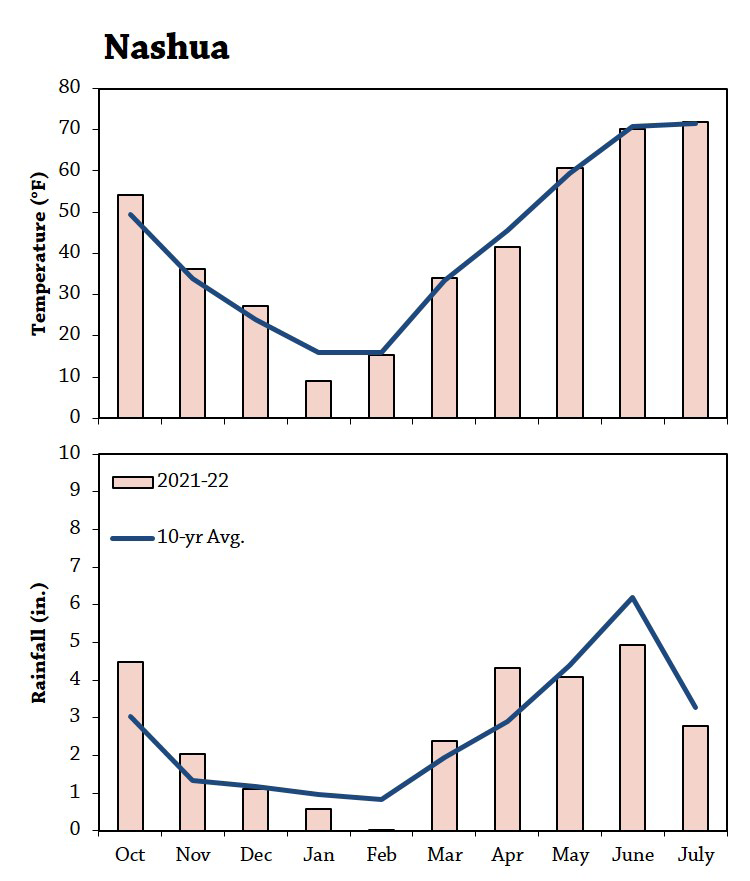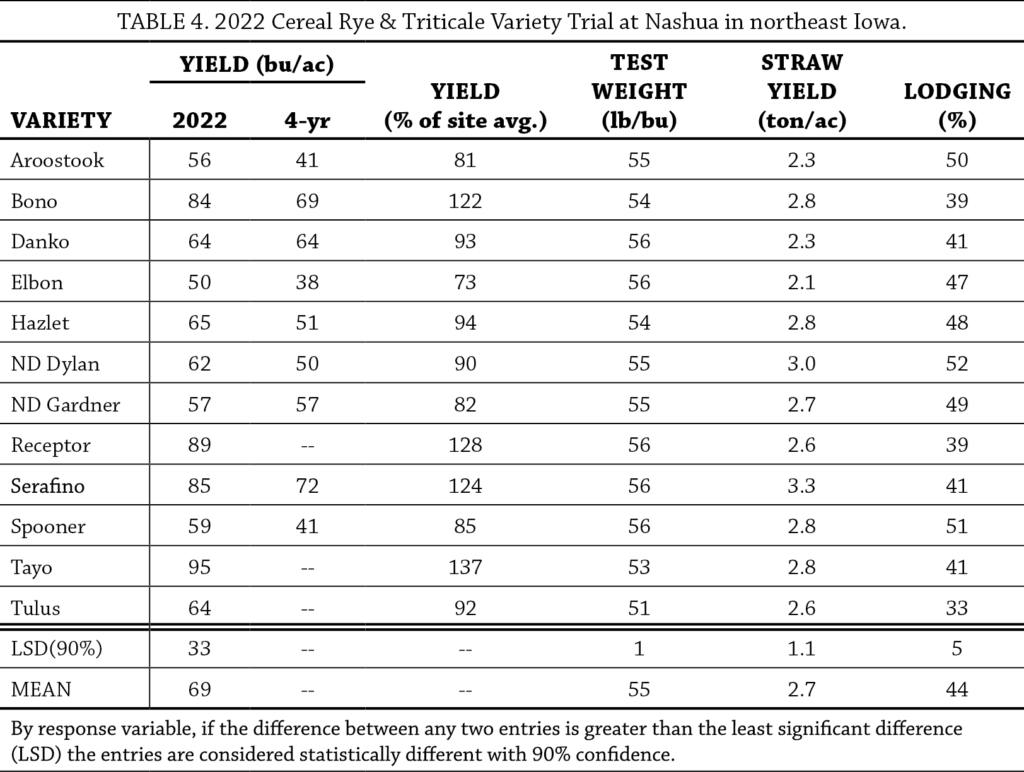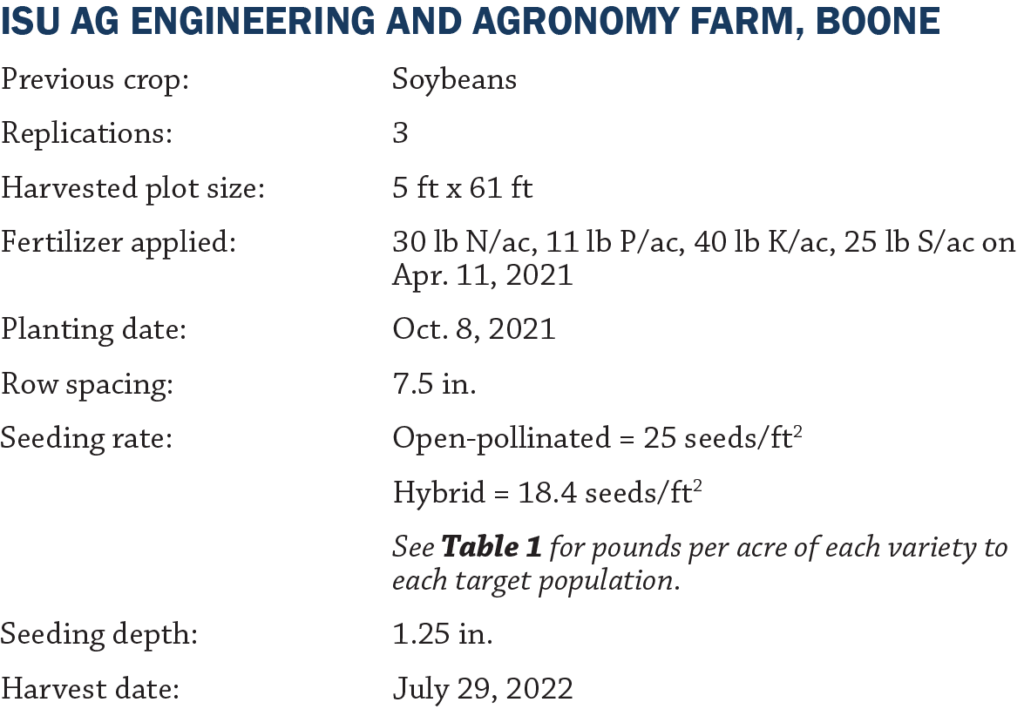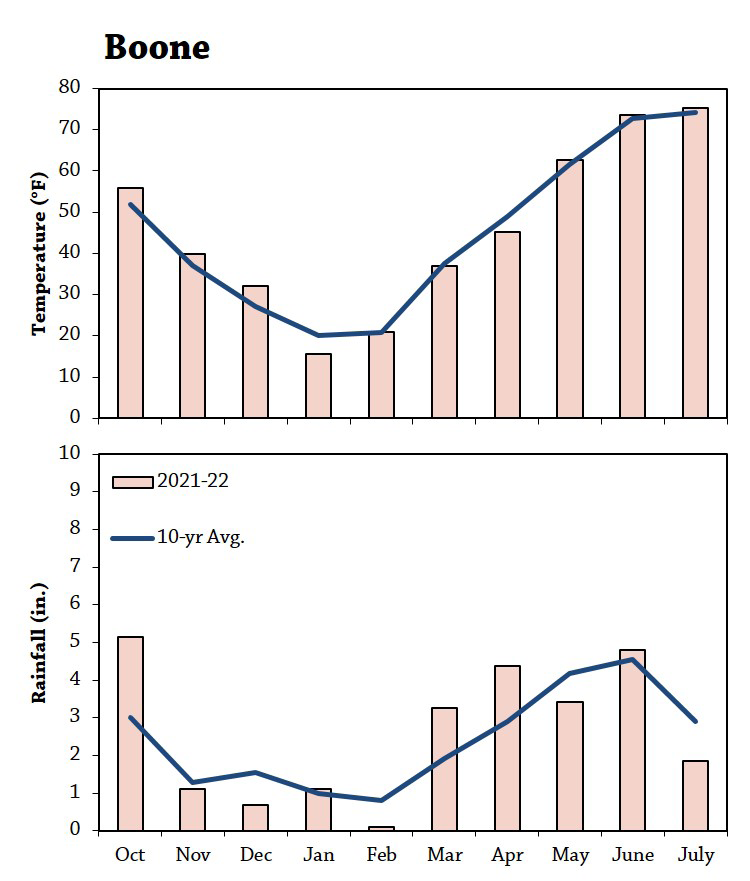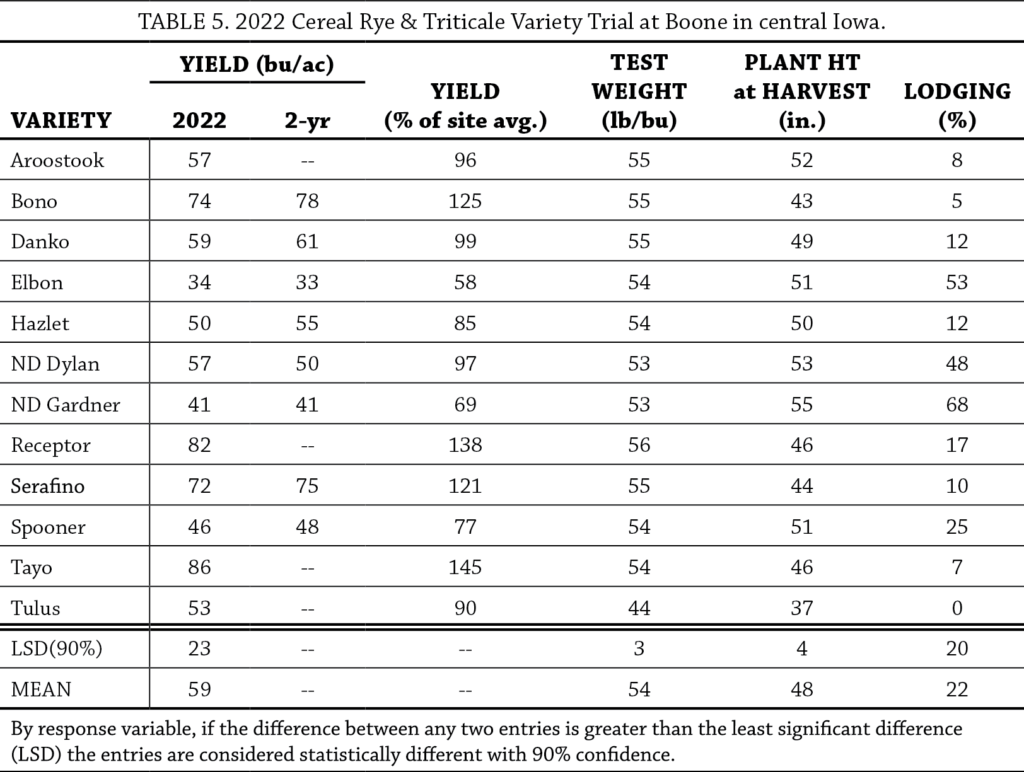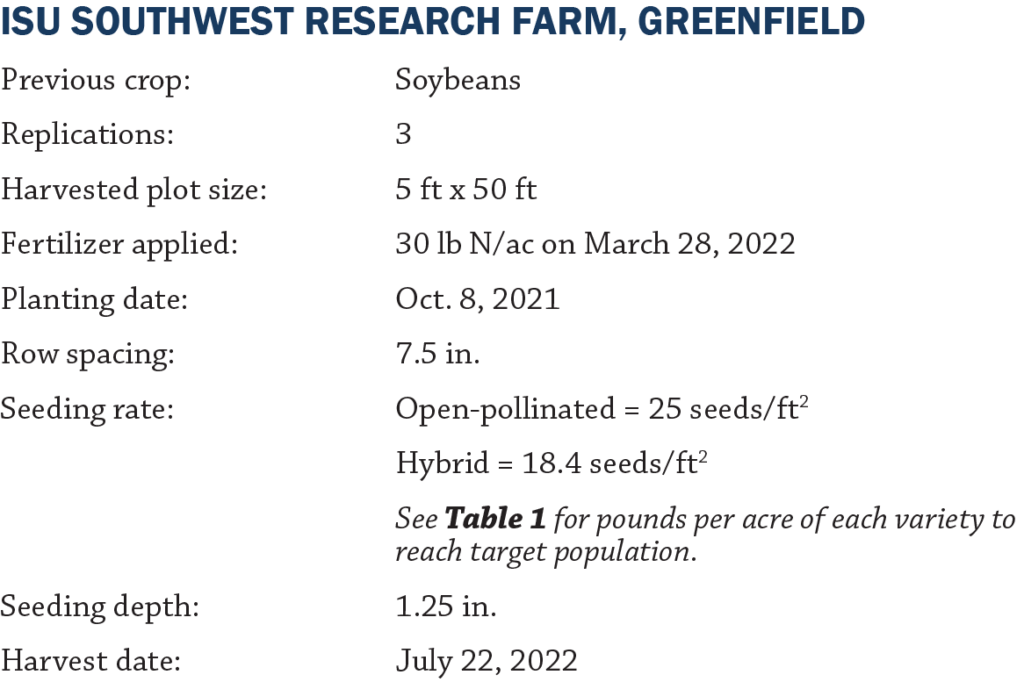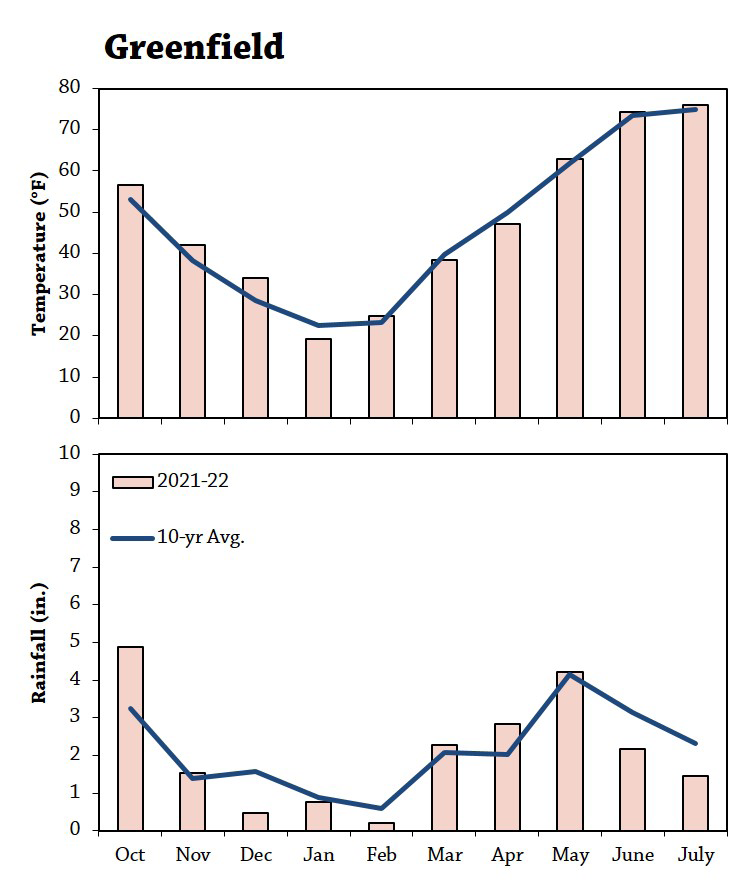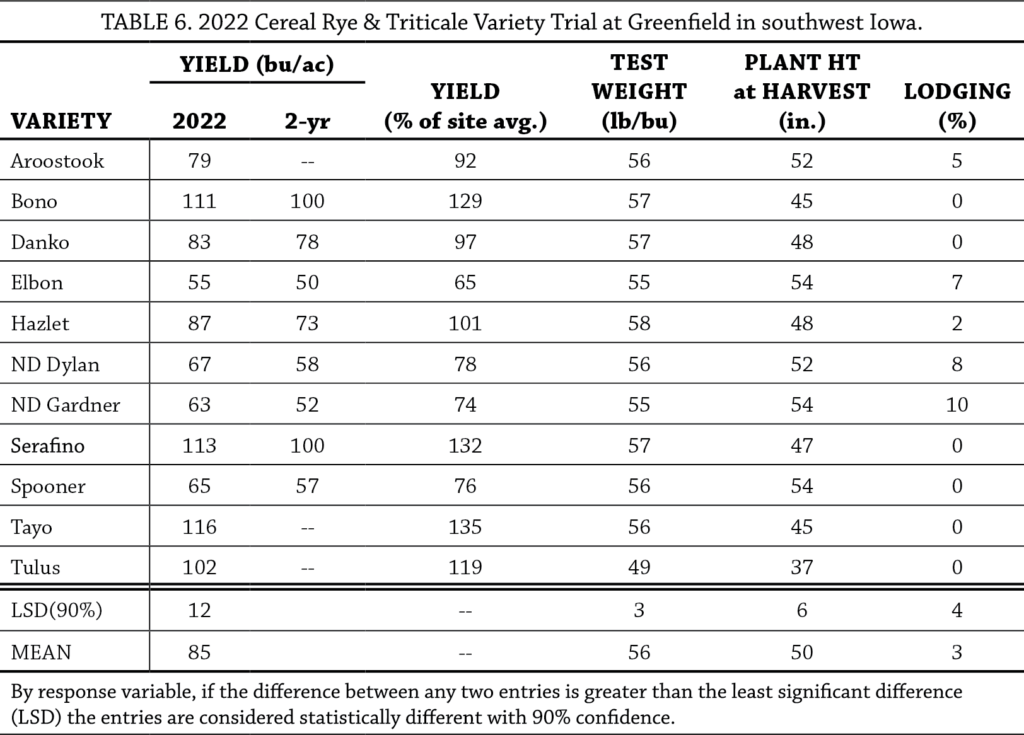This research was funded by USDA-NIFA, Walton Family Foundation, and Albert Lea Seed House.
In A Nutshell:
- Eleven cereal rye varieties and one triticale variety were screened at four Iowa State University research farms.
Key Findings:
- Across sites and varieties, average cereal rye yield was 81.3 bu/ac.
- Hybrid cereal rye varieties, Bono, Receptor, Serafino and Tayo, were the top-yielding varieties at each site. Hazlet and Danko were the top yielding open-pollinated varieties.
- Across all sites and open-pollinated varieties, average germination was 94%.
Background
This was the fourth year that Practical Farmers of Iowa coordinated cereal rye variety trials at Iowa State University research farms at Kanawha (north-central Iowa) and Nashua (northeast Iowa); it was the second year of trials at ISU research farms at Boone (central Iowa) and Greenfield (southwest Iowa). In 2022, we included one winter triticale variety (Tulus) along with 11 cereal rye varieties. In 2019, the average cereal rye yield across three sites in northern Iowa was 43 bu/ac.[1] In 2020, the average cereal rye yield across the same northern Iowa sites was 39 bu/ac.[2] In 2021, the average cereal rye yield across the four research farms was 65.3 bu/ac.[3] Cereal rye variety trials conducted by the University of Minnesota reported an average yield of 83.1 in 2021.[4]
Methods
Variety trials were conducted at four locations in 2022: ISU Northern Research Farm in Kanawha; ISU Northeast Research Farm in Nashua; ISU Ag Engineering and Agronomy Farm in Boone; ISU Southwest Research Farm in Greenfield. Production characteristics and some breeding history about each of the trialed varieties can be found in Table 1. Information on winter hardiness, days to heading, plant height and ergot susceptibility can be sourced from the University of Minnesota.[4]
Rye management information is provided with the results from each location. No herbicide, insecticide or fungicide were applied at any location. Statistical significance is determined at the 90% confidence level and means separations were determined using Tukey’s least significant difference (LSD).
Rye seed samples from each location were sent to the Iowa State Seed Testing Laboratory for germination testing roughly five weeks after harvest. Samples were pooled across replicates at each site and this precluded us from analyzing these germination data statistically. As such, please keep in mind: We present germination percentages in this report as a rough comparison among varieties and locations.
Results and Discussion
Data were analyzed by location and reported yields are corrected for 14% moisture. A “percentage of test average” calculation for 2022 is included to aid in comparing entries at each location. The yield average is provided for varieties that were also trialed in 2019, 2020 and 2021. Rainfall and temperature data were accessed from the nearest weather station.[5]
Across all sites and varieties, the average yield was 81.3 bu/ac in 2022; higher than the yield averages of the previous three years. The hybrid varieties developed by KWS (Bono, Receptor, Serafino, and Tayo), were the top yield performers at each location This was the first year that Receptor and Tayo were trialed. Over the four years of variety trials, hybrid varieties have out-yielded open-pollinated varieties by about 30 bu/ac. The hybrids were also shorter in stature than the open-pollinated varieties (on average by 7 in.). Of the seven open-pollinated cereal rye varieties trialed, Danko and Hazlet were the top yielding varieties across all four sites; similar to what we also observed in 2021.[3]
Seed germination of open-pollinated varieties ranged from 89% (Tulus triticale) to 96% (Elbon) across the four sites (Table 2).
Funding Acknowledgement
This work is supported by the Agriculture and Food Research Initiative, grant number F9000315202081 from the USDA National Institute of Food and Agriculture. Any opinions, findings, conclusions, or recommendations expressed in this publication are those of the author(s) and do not necessarily reflect the views of the U.S. Department of Agriculture.
References
- Gailans, S. 2019. Cereal Rye Variety Trial 2019. Practical Farmers of Iowa Cooperators’ Program. https://practicalfarmers.org/research/cereal-rye-variety-trial-2019/ (accessed September 2022).
- Gailans, S. and L. English. 2020. Cereal Rye Variety Trial 2020. Practical Farmers of Iowa Cooperators’ Program. https://practicalfarmers.org/research/cereal-rye-variety-trial-2020/ (accessed September 2022).
- Gailans, S. and L. English. 2021. Cereal Rye Variety Trial 2021. Practical Farmers of Iowa Cooperators’ Program. https://practicalfarmers.org/research/cereal-rye-variety-trial-2021/ (accessed September 2022).
- Wiersma, J. 2022. Winter Rye Field Crop Variety Trials. University of Minnesota. https://varietytrials.umn.edu/winter-rye (accessed September 2022).
- Iowa Environmental Mesonet. 2022. Climodat Reports. Iowa State University. http://mesonet.agron.iastate.edu/climodat/ (accessed September 2022).


